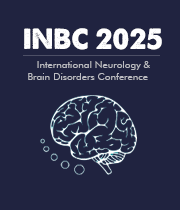Title : An alternative approach to testing and rehabilitation of decerebrated animals
Abstract:
The method of locomotor training of decelebrated animals is well known, according to which a laboratory animal (cat) is placed on tiltable support, equipped pressure sensors, are suspended the front of the animal’s body on a hammock, and the rear is left free, so that the hind limbs rest on a 2-ribbone threadmill, made by inclined (Musienko, et al., 2009). A similar method of reaction of motor function by bipedal training with relief of animal weights is used in experiments on rats (Nessler, et al., 2005; Capogrosso, et al., 2018), in which the equilibrium of the subjects and regulation of the pressure of the hind limbs on the support of the balance was carried out by hanging of animals wearing a vest with a rod fixed by the experimenter, or a robotic technical device. Above methods of locomotor training by bipedal training with animal weight relief are actually not aimed at restoring genetically innate coordinated movements of the trunk, fore and hind limbs used animals before brain injury when moving in natural conditions, but rather to develop a new mode of movement on the hind limbs, ac-companied by an attempt to form a new pose with motor coordination of the muscles of the trunk and hind limbs that is not natural for the animal.
To restore genetically congenital muscle reflexes and coordinated movements of the head, torso and limbs in animals with traumatic damage to various parts of the spinal cord and brain, testing and subsequent rehabilitation of the motor functions of decerebrated animals are carried out in slowly by performing motivated targeted moving reactions, sequentially changing the initial position (pose) of the animal with constant monitoring of their functional state (Albertin, 2024). These advantages arose due to the fact that rehabilitation is carried out in stages, by performing motivated purposeful motor reactions, after consequently changing the initial position of the animal. This became possible due to the fact that the device includes: a removable tray with cutouts and a removable support base made with the possibility of vertical movement, an original flexible head fixation rod, a pupilometer for re-gistering oculomotor and pupillary reflexes, a manipulator in the form of a lever with a regulated load-counterweight, and also equipped with a reward dispenser supplied in the form of liquid food and a tube designed to restore the animal's innate food-producing movements performed by the forelimbs when removing portions of food from the tube, submitted by the experimenter. The proposed testing and motor training procedures create optimal conditions for the rehabilitation of sensorimotor functions lost in decerebrated animals, with constant monitoring of their functional state. At the same time, the atraumatic immobilization of the animal provides the possibility of conducting periodic the-rapeutic sessions aimed at restoring the conductivity of the nervous and spinal cord and improve the trophic properties of the nervous system, by stereotactic, targeted neurochemical and electrical sti-mulation of the sensory motor cortex and the conditions of the brain, carried out under the context of strict limiting mobility. heads (Barthelemy, et al., 2007). In the device we proposed, this condition is ensured by the constructive capabilities of the prefabricated rod-fixator of the animal’s suspension, which allows, along with soft fixation of the animal’s head, the strict joint of its component supporting elements.
The identified technical solutions presented were protected by receiving a patent of the Russian Fe-deration RU ?2827459 ?2 (26th Sept. 2024).



